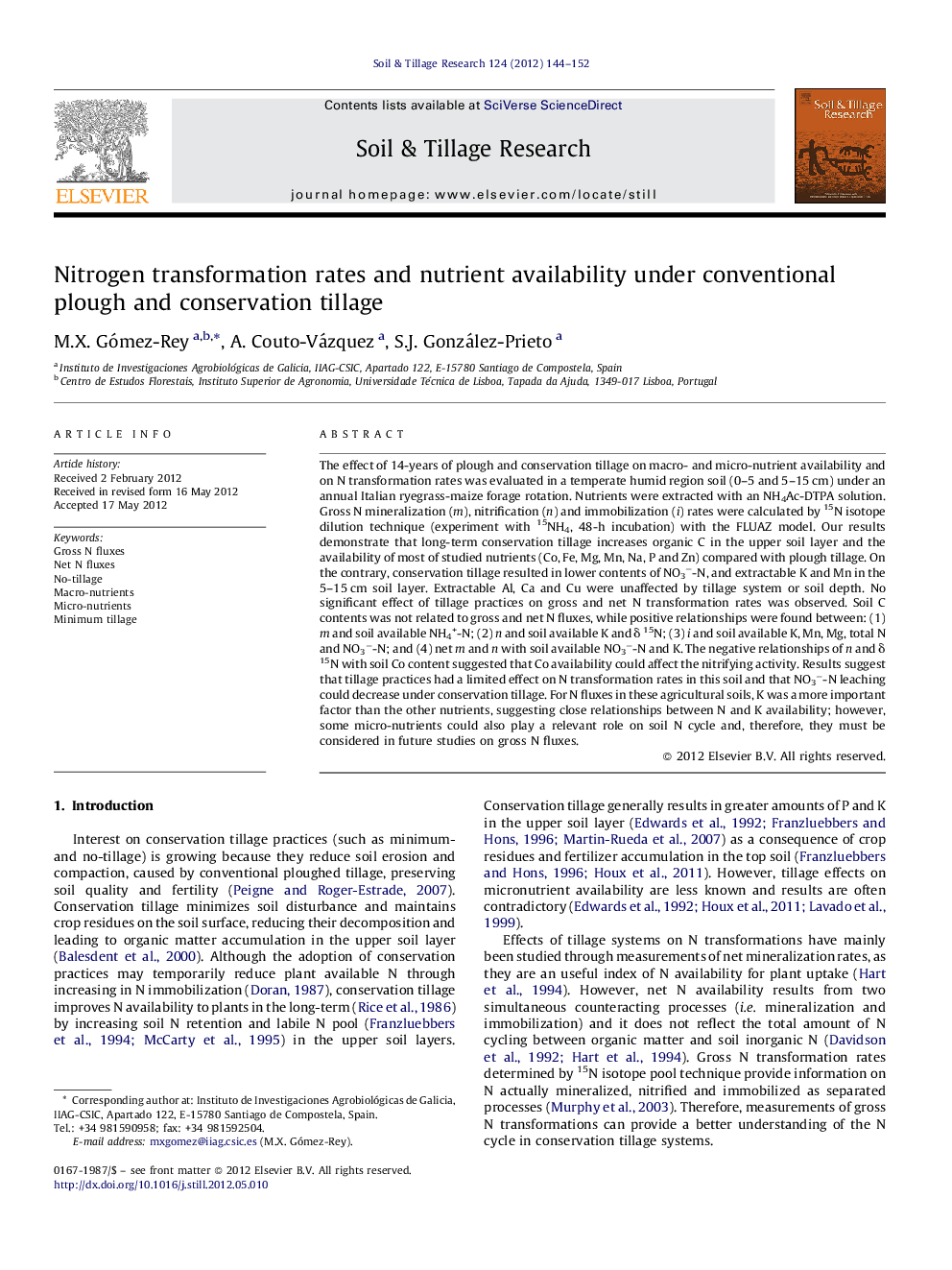| Article ID | Journal | Published Year | Pages | File Type |
|---|---|---|---|---|
| 305944 | Soil and Tillage Research | 2012 | 9 Pages |
The effect of 14-years of plough and conservation tillage on macro- and micro-nutrient availability and on N transformation rates was evaluated in a temperate humid region soil (0–5 and 5–15 cm) under an annual Italian ryegrass-maize forage rotation. Nutrients were extracted with an NH4Ac-DTPA solution. Gross N mineralization (m), nitrification (n) and immobilization (i) rates were calculated by 15N isotope dilution technique (experiment with 15NH4, 48-h incubation) with the FLUAZ model. Our results demonstrate that long-term conservation tillage increases organic C in the upper soil layer and the availability of most of studied nutrients (Co, Fe, Mg, Mn, Na, P and Zn) compared with plough tillage. On the contrary, conservation tillage resulted in lower contents of NO3−-N, and extractable K and Mn in the 5–15 cm soil layer. Extractable Al, Ca and Cu were unaffected by tillage system or soil depth. No significant effect of tillage practices on gross and net N transformation rates was observed. Soil C contents was not related to gross and net N fluxes, while positive relationships were found between: (1) m and soil available NH4+-N; (2) n and soil available K and δ 15N; (3) i and soil available K, Mn, Mg, total N and NO3−-N; and (4) net m and n with soil available NO3−-N and K. The negative relationships of n and δ 15N with soil Co content suggested that Co availability could affect the nitrifying activity. Results suggest that tillage practices had a limited effect on N transformation rates in this soil and that NO3−-N leaching could decrease under conservation tillage. For N fluxes in these agricultural soils, K was a more important factor than the other nutrients, suggesting close relationships between N and K availability; however, some micro-nutrients could also play a relevant role on soil N cycle and, therefore, they must be considered in future studies on gross N fluxes.
► Conservation tillage increased stratification of SOC and nutrient availability. ► Tillage practices had a limited effect on gross N transformation rates. ► For N fluxes, K availability is a important controlling factor.
